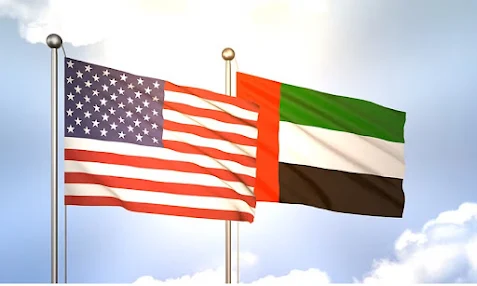The recent imposition of a 10%
universal baseline tariff by the United States, affecting the UAE and Saudi
Arabia, necessitates a careful examination of its potential consequences. This
analysis considers the existing trade dynamics, the role of UAE free zones, and
potential mitigation strategies.
Current Trade Landscape
Significant Trade Volume:
- In 2024, the total bilateral goods
trade between the US and UAE reached $34.4 billion,
underscoring their robust economic ties.
- The US exports to the UAE amounted
to $27.0 billion, compared to $7.5 billion in imports,
reflecting a $19.5 billion trade surplus in favor of the US.
- The annual growth rate of bilateral
trade has remained stable at approximately 4.8%, suggesting
sustained economic interdependence.
- Key trade categories
include:
- Aircraft and aerospace components:
$6.2 billion
- Electronics and technology products:
$4.5 billion
- Automobiles and transportation equipment:
$3.8 billion
- Medical and pharmaceutical products:
$2.1 billion
- Oil and petrochemicals:
$5.6 billion
- The UAE plays a vital role in re-exporting
US goods to the wider GCC and African markets, amplifying its economic
impact.
Vulnerability:
- The UAE’s reliance on US imports,
particularly in high-tech and industrial sectors, increases exposure to
risks posed by new tariffs.
- Approximately 63%
of UAE’s high-tech imports originate from the US, making cost increases a
potential hurdle for growth.
- US-bound exports
represent nearly 17% of total UAE exports, making diversification a
crucial priority.
Impact on UAE Free Zones
Key Hubs Affected:
- Jebel Ali Free Zone (JAFZA),
handling nearly 50% of UAE’s trade, faces risks of higher
operational costs and re-export bottlenecks due to tariff
increases.
- Dubai Airport Free Zone (DAFZ),
an essential hub for electronics, may experience a projected 8% decline
in US-bound shipments.
- Other specialized free zones focusing on automobile
parts, aerospace, and pharmaceuticals will likely encounter pricing
pressures.
General Vulnerabilities:
- Supply chain efficiency
may suffer, particularly for industries with tight profit margins.
- Investor confidence
could weaken due to increased trade uncertainty.
- The anticipated 3.2% rise in logistics
costs will reduce the attractiveness of UAE-based trade routes.
Potential Impacts and
Mitigation Strategies
Direct Effects:
- UAE exporters to the US will face
increased costs, impacting competitiveness, particularly for small
and medium enterprises (SMEs).
- The UAE may need to expand its export
base beyond the US, focusing on Asia and Europe.
Indirect Effects:
- The tariffs could contribute to slower
global trade growth, negatively affecting UAE’s GDP, which
heavily relies on international trade (accounting for 64% of total GDP).
- Disruptions in global supply chains
could reshape UAE’s trade priorities, accelerating local production and
alternative sourcing.
Mitigation and Opportunities:
- Diversifying trade partnerships
to strengthen ties with China, India, and EU markets.
- Enhancing the UAE’s logistics and
infrastructure to offset potential efficiency losses.
- Expanding digital trade and services,
which are less affected by tariffs (e.g., financial services, tech-based
solutions).
- Strengthening regional GCC trade,
leveraging the customs union and tariff harmonization agreements.
Critical Considerations
Global Trade Dynamics:
- The broader implications of US trade
policy could influence other markets, prompting retaliatory
tariffs or shifts in global supply chains.
Strategic Diversification:
- The UAE must accelerate its economic
diversification plans, reducing dependence on US markets.
Geopolitical Relations:
- Maintaining strong diplomatic and trade
ties with the US remains crucial for long-term stability.
Conclusion
While the 10% tariff creates
challenges for UAE free zones and exporters, it also presents strategic
opportunities. By expanding its trade network, enhancing logistics
infrastructure, and advancing economic diversification, the UAE can
mitigate negative impacts. Continuous monitoring of trade dynamics is
essential for adaptive policy responses.
#UAETariffsImpact #USUAETrade #FreeZoneChallenges
#EconomicDiversification #GlobalTradeDynamics


No comments:
Post a Comment